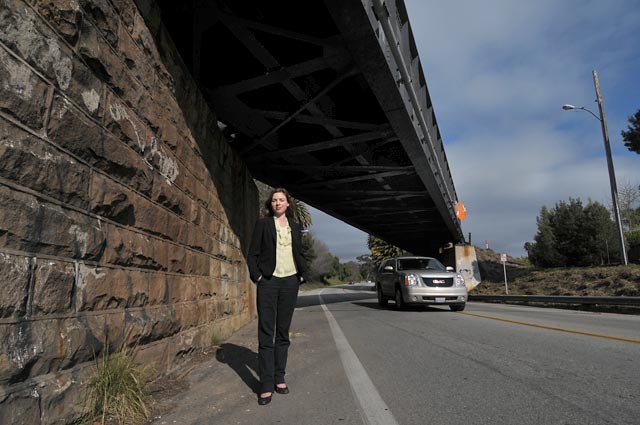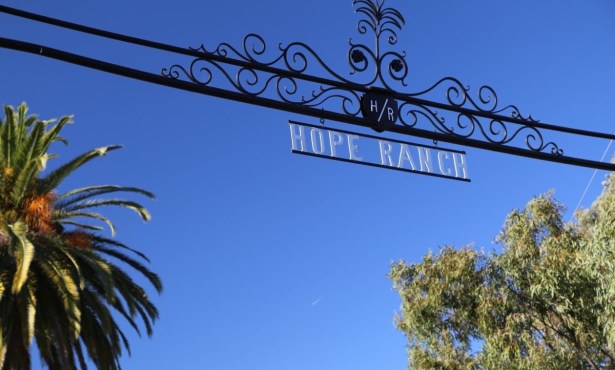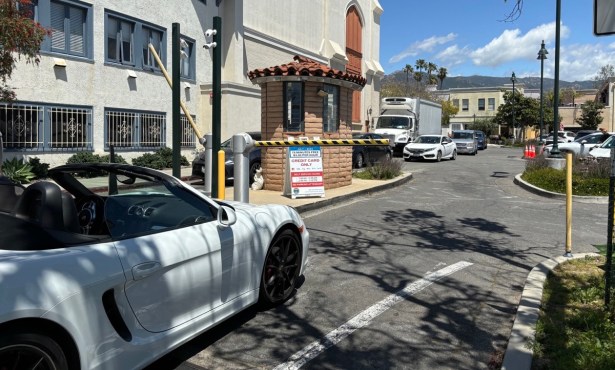Noleta’s Next 20 Years
Eastern Goleta Valley Plans for the Deep Future

Sandwiched between the cities of Santa Barbara and Goleta is the Eastern Goleta Valley, known simply to many — love it or loathe it — as Noleta. Reaching from the sea to the mountains and stretching roughly from Patterson Road to Highway 154, Noleta is home to more than 31,000 people, a couple thriving commercial centers, plenty of parks and schools, and an impressive amount of urban farmland.
In 2006, residents of this unincorporated region began discussing what the next 20 years should look like and, in 2008, a group of volunteer citizens formed the Goleta Valley Planning Advisory Committee, or GVPAC, to officially update the area’s community plan, which was first issued in 1993 (then, it also included the area that became the City of Goleta). Over the past four months, the public’s been invited to critique that future’s first draft — which was written by county staff based on GVPAC guidance — in a series of meetings that continue on March 17, March 22, and, if necessary, March 30. (Read all you’d ever need to know about the plan, its history, and more here.)
For such a dynamic and determinate vision — which will produce a zoning map, design guidelines, and a trajectory for development — there hasn’t been the sort of rabble-rousing turmoil one comes to expect in Santa Barbara County planning, save for lingering concerns over preserving farmland. That’s a testament to the efforts of GVPAC members, who were selected by Supervisor Janet Wolf to be representative of the community, as well as to the county’s assigned staff, namely Erika Leachman, the 29-year-old planner who’s diligently and joyously toiled away on the plan and other Goleta issues since being hired four years ago.
“On my first day, they said, ‘You’re going to be the Goleta girl,’” laughed Leachman, who’s been leading the GVPAC review meetings with a delightfully informed glee unusual for planning hearings. And her attitude and aptitude are paying off. “The feedback has been fantastic,” said Leachman, who’s also gotten high marks from GVPAC’s chair Valerie Olson. “She is a really conscientious, well-informed, thorough person,” said Olson. “I consider myself to be a very hard worker, but that gal makes me look like a piker.”
While much of the process has merely been to enhance what was set down in 1993, other parts involve entirely new ideas. “The Bowtie and Valley Junction are brand new concepts,” said Leachman, referring to Noleta’s two main commercial zones. The Bowtie refers roughly to the stretch of State/Hollister between Highway 154 and Auhay Road, where Java Station, the Creek Side Inn, Talevi’s Liquor, and other commercial enterprises operate amid residential neighborhoods. “While it’s a fairly thriving commercial area, it’s missing a lot of the basic services that it could use to be better and more accessible to the community,” said Leachman, who said the area will get “a facelift” in the next couple decades with better parking and more walkability.
The Valley Junction, meanwhile, is the Calle Real-Turnpike-Hollister semi-circle that also features commercial, civic, and residential uses without much central planning. “Overall, the goal of the Valley Junction is to become more of the core of the community. The strategy is to make it a little more cohesive and more accessible,” said Leachman. “We don’t need a downtown Santa Barbara in the Eastern Goleta Valley, but we do want a place that echoes the community a little more — less of a remnant but more of a place — instead of having to travel to the cities to find it.”
The Ag Question
But not even a pleasant planner like Leachman can keep everyone happy all the time. The question of how to preserve Noleta’s urban agriculture remains the central debate of the GVPAC process, even though almost all of what’s currently zoned ag will remain that way.
“We like our suburban semi-rural way of life exactly the way it is,” said Ann Crosby of the Coalition for Sensible Planning, whose members are the primary public citizens submitting comments on the plan. Angry that they’re only allowed three minutes to comment at the end of each meeting and contending that “planning has become synonymous with development,” Crosby and her associate Patty Close do not believe that the GVPAC’s draft document reflects the goals of the 2006 visioning process, fear such amorphous words as “infill,” and are suspicious of the county staff’s motives, believing that they are trying to rezone agriculture into high-density residential in order to boost the tax revenues. “It is to the county’s advantage to have more tax base. That’s a pretty well-known fact,” said Close. “I wouldn’t say they are conspiring, but that there’s an emphasis and we’re there to create another emphasis: We want at all costs to preserve our ag land.”
With every other farmland area set to remain in ag zoning, the main evidence that Crosby and Close use to support their theory is a 17-acre lot along Calle Real just east of Turnpike known at the MTD property. “Right now the GVPAC is capitulating to the county’s desire to rezone that land to high-density,” said Crosby. “The county is in the driver’s position.”
The woman allegedly at the wheel would be Leachman, and she explained that, unlike the larger ag parcels in the South Patterson and San Marcos areas, the MTD property is not currently being farmed and is surrounded by other land uses, from a hotel to condos to the county campus. As such, the GVPAC began to see that keeping it zoned as ag might not be the right solution, because the owner would have a decent chance of getting it rezoned later due to its setting and lack of active ag. “They realized that leaving it as an agricultural designation wouldn’t guarantee over the long term that it would remain that way,” said Leachman, explaining that the GVPAC wanted to be proactive in determining what the property would be rather than waiting to see what happened.
But the ag debate doesn’t stop there. The Environmental Defense Center in Santa Barbara is also watching the plan’s process, which is proposing some new ideas for what farms could do. “We’re concerned that allowing things like restaurants and lodging facilities that are not compatible with agriculture might end up displacing agriculture,” said the EDC’s Brian Trautwein, who’s suggested that the plan should create two types of ag zoning, one on prime soil that restricts use to just farming and another on less-than-prime soil that allows other limited uses. “We think it’s important to grow our own food as a community because of the tremendous amount of pollution generated when we get our food from other parts of the world.” (Trautwein’s also using the GVPAC process as a window to force the county to change the way it regulates brush clearing. Currently, a property owner can clear up to 5,000 square feet of brush without a permit so long as no development ensues. “Given that, people can remove all environmentally sensitive habitat from their property and never have to get a permit or undergo any mitigation,” said Trautwein.)
In working on the process for five years now, GVPAC chair Valerie Olson has become an expert in Noleta’s urban farming dilemma, in which farmers say it’s hard to make a buck yet the neighbors want everything to remain quaint. “The issue of ag in an urban setting is a difficult problem to tackle,” she explained. “We’re all feeling the complexity of that. It really permeates everything we’re doing.” Olson appreciates the idea of food security and the sustainable desire for a community to feed itself, and says that the GVPAC has tried to help by encouraging residential farming and trying to give farmers ways to stay profitable. But the dream doesn’t always reflect the reality. “Most of what we grow here is not row crops. It’s not vegetables,” she said, noting that a steady diet of avocados and lemons — which are common Noleta crops — wouldn’t sustain too many people. “It’s really nice to say we need to keep all this land in ag, but it assumes everyone is going to grow what you want them to grow.”
Though the review of the first draft is approaching the final stages, the plan will eventually make its way through the hoops of county government and then be sent out for environmental review, perhaps as soon as this summer. That means talk of urban ag in Noleta isn’t going away anytime soon. Encouraged Leachman, “It’s a great time to get involved.”
411
The public is invited to review the GVPAC’s first draft of the new Eastern Goleta Valley Community Plan on March 17, March 22, and, possibly, March 30 at the County of Santa Barbara’s Planning Commission hearing room.



